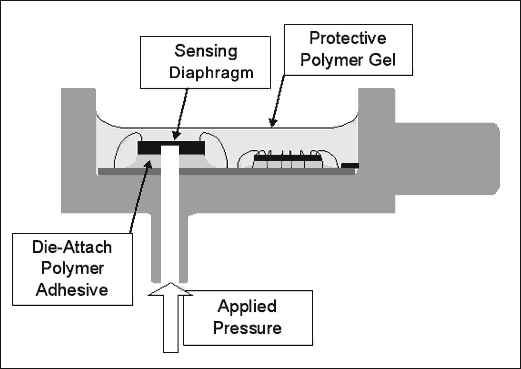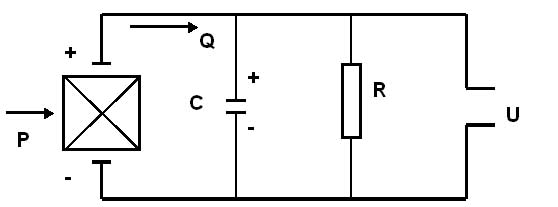
The principle of these pressure transducers is based on the well-known phenomenon, that when an asymmetrical crystal is elastically deformed along its specific axes, an electrical charge is developed on its sides. The value of this charge is proportional to the force applied to the crystal, and, therefore, to the pressure under measurement.

Fig. shows piezoelectric crystal circuit. An electrical charge developed on the sides of the crystal is converted into a voltage-type signal using a capacitor. This voltage is proportional to the electrical charge developed, and to the pressure to be measured. Piezoelectric sensors cannot measure static pressures for more than a few seconds, but they have a very quick response when measure dynamic pressures.
Synthetically developed quartz crystals (barium titanate, lead zirconate) have similar properties as natural single crystal (quartz). But natural quartz still is the perfect material for manufacturing piezoelectric sensitive elements, because it has perfect elasticity and stability, it is insensitive to temperature variations and it has high insulation resistance.
These pressure transducers are used for measurements of hydraulic and pneumatic pulsations, flow instabilities, fuel injection, etc.